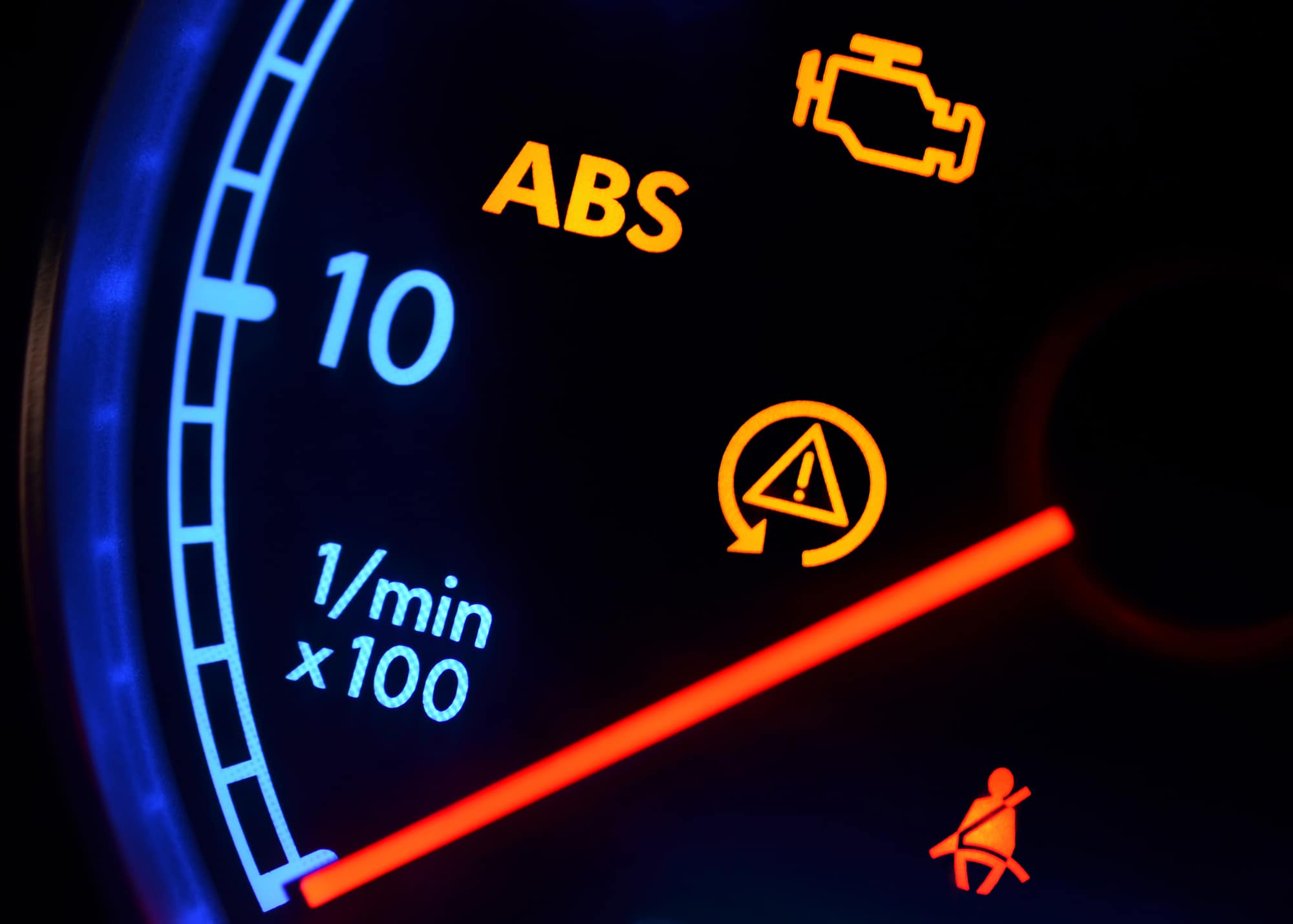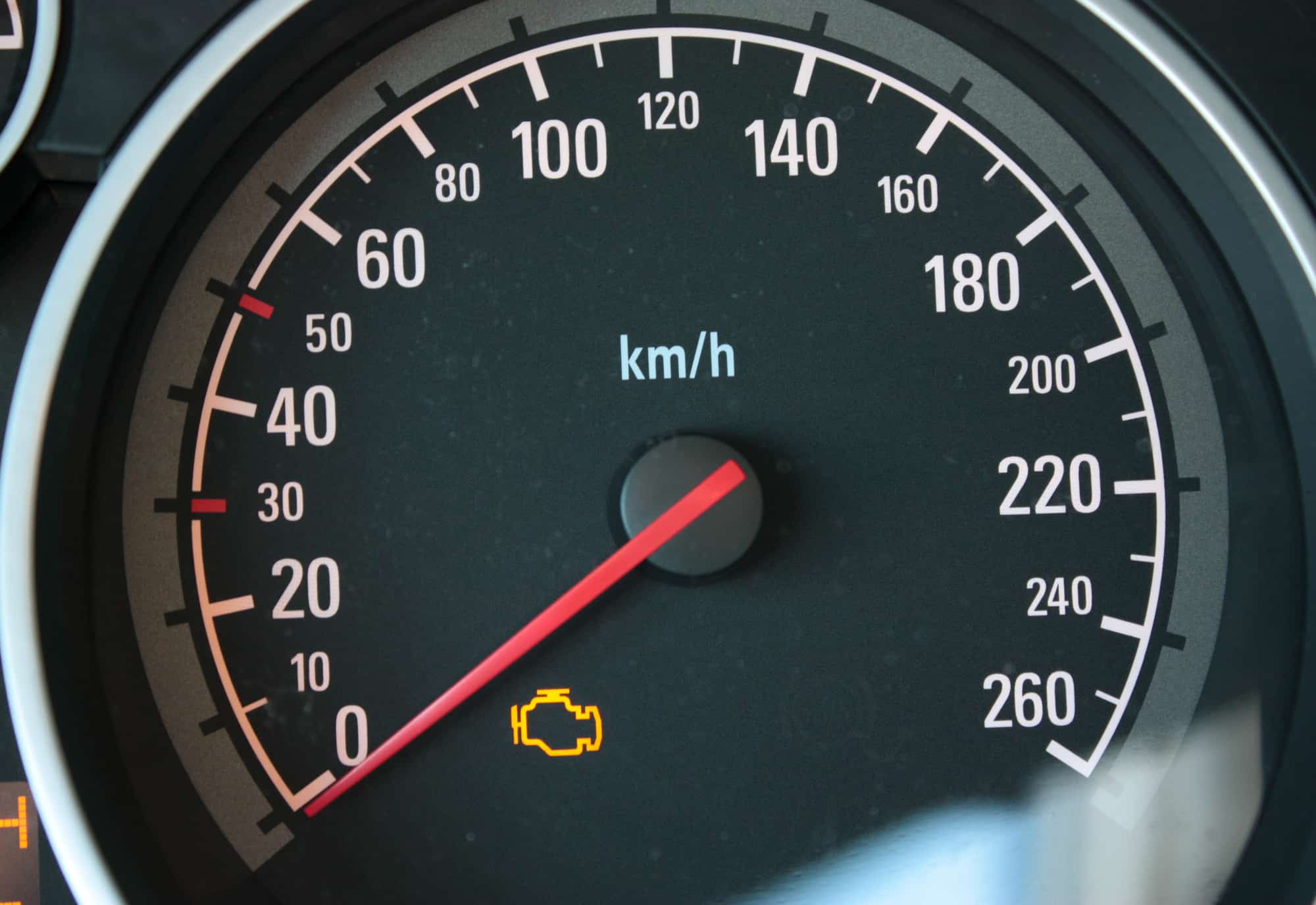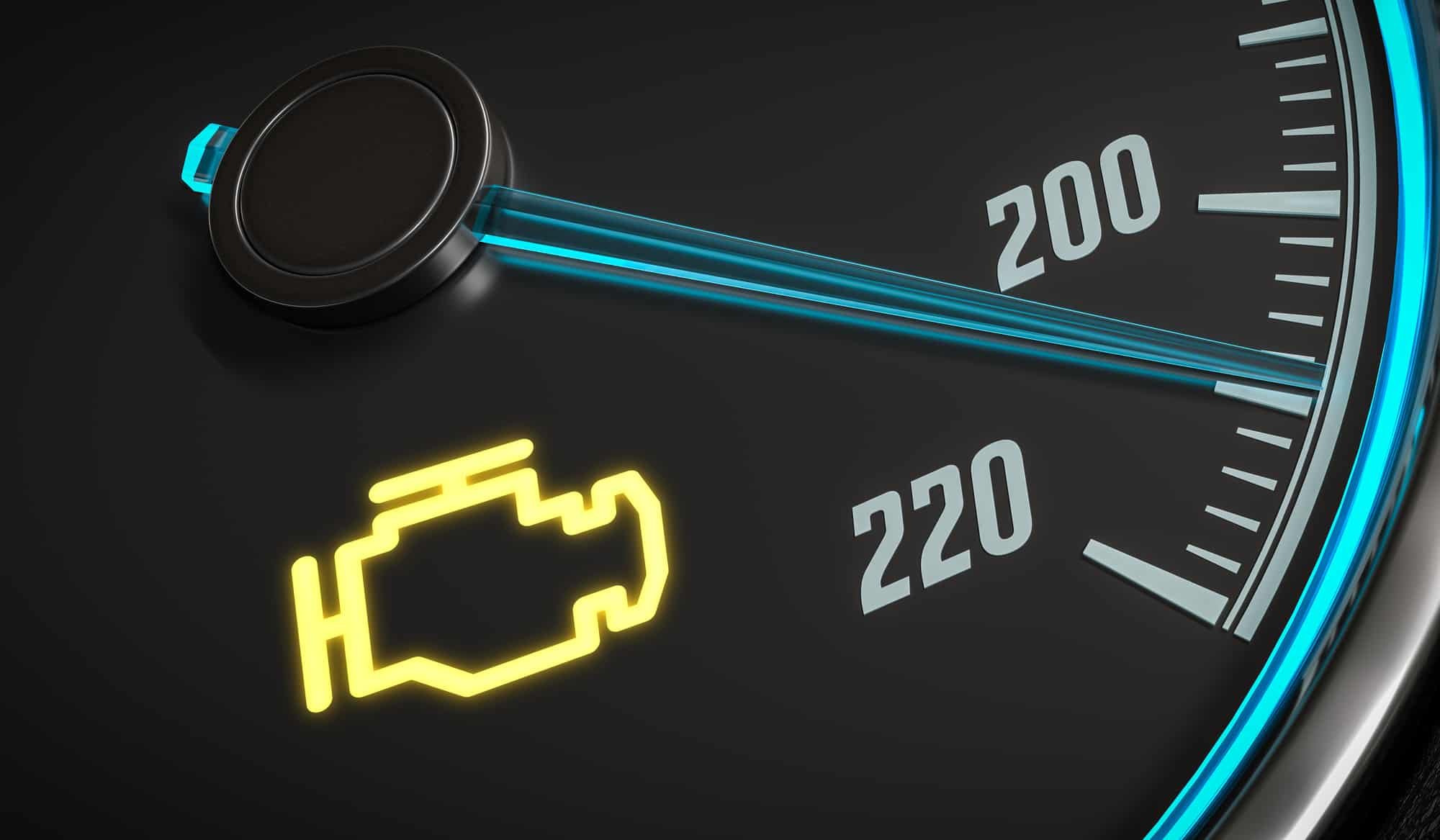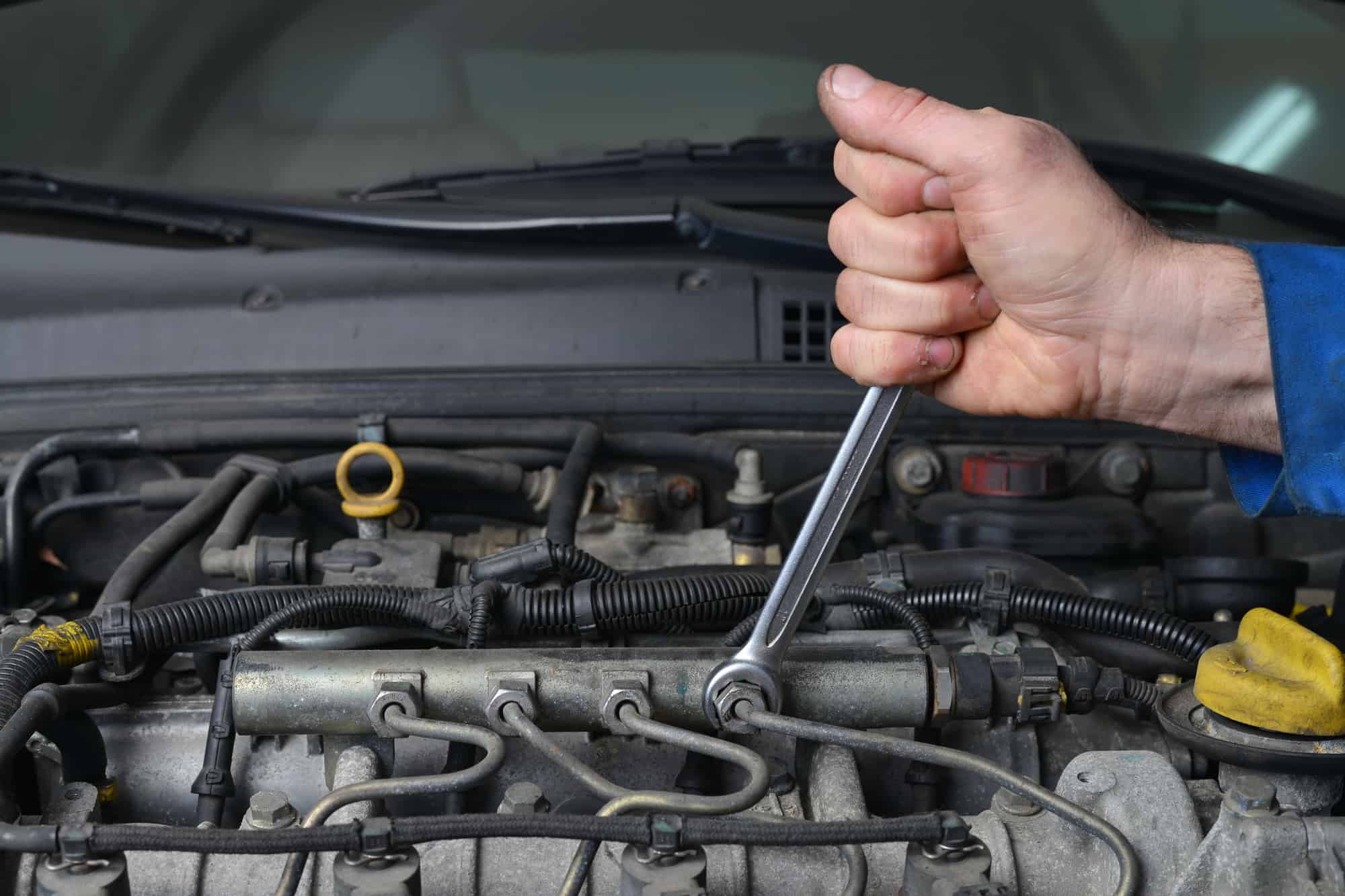In general the most common causes of a check engine and traction control light are ABS module problems, faulty wheel speed sensors, throttle position sensor issues or problems with the braking system.
In this article, we’ll explore some of the most common causes of this issue and what you can do to diagnose and fix the problem.
What Can Cause The Check Engine Light and Traction Control Light To Light Up Together?
The traction control system (TCS) is a safety system that detects when a car’s wheel slips and loses grip on the road. The system then automatically slows the slipping wheel’s speed to help the driver regain control of the vehicle.
One common cause of a faulty traction control system is a problem with the wheel speed sensors. These sensors monitor the speed of each wheel and send data to the TCS to help it determine when a wheel is slipping.
If one or more of the sensors is faulty or damaged, it can cause the TCS to malfunction, triggering the check engine light and traction control light to come on.
When both lights come on at the same time, it usually indicates a problem with the traction control system. It could also mean that there is a problem with a sensor that is shared between the two systems, such as the vehicle speed sensor.
It’s important to use an OBDII scanner to read the trouble codes and diagnose the problem if you see both lights on the dashboard.
In my experience, the problem may be minor and easy to fix, while in other cases, it may require more extensive repairs.
The Most Common Causes Of A Traction Control Light With A Check Engine Light?
When both the traction control light and the check engine light come on at the same time, it usually indicates a problem with the traction control system. Here are some common causes in more detail:
1. Wheel Speed Sensor Malfunction
The traction control system relies on wheel speed sensors that provide information about the speed of the wheels to the engine management system for processing.
This information is used to determine the vehicle’s speed and to adjust various engine parameters such as fuel injection, ignition timing, and transmission shifting.
A failing or faulty wheel speed sensor can cause the engine management system to malfunction and can affect the performance of the engine, such as causing it to shut off entirely or go into “limp mode”.
2. Faulty ABS Module
The Anti-lock Braking System (ABS) module is responsible for regulating the braking system and the traction control system. If the ABS module malfunctions, it can cause both the traction control light and the check engine light to turn on.
A faulty ABS module can cause the check engine light to come on because the ABS module is connected to the ECU and other control modules in the vehicle. When the ABS module detects a fault, it sends a signal to the ECU, which can trigger the check engine light to come on.
3. Engine Misfire
An engine misfire occurs when one or more cylinders fail to ignite properly, resulting in a rough running engine. This condition can trigger the check engine light and may also affect the performance of the traction control system, leading to the traction control light being illuminated.
An engine misfire can cause the traction control light to come on because the traction control system (TCS) uses information from the engine sensors to determine the amount of power that needs to be sent to the wheels.
If the engine is misfiring, it can cause a loss of power, which can trigger the TCS to activate and turn on the traction control light.
Some vehicles may have a system that will automatically turn off the traction control system if it detects an engine misfire to prevent further damage to the engine
4. Throttle Position Sensor (TPS) Issues
If the TPS malfunctions, it can cause an irregular throttle response, affecting engine performance and triggering the check engine light.
A bad throttle position sensor (TPS) can cause the traction control light to come on because the TPS is responsible for providing information about the position of the throttle to the ECU.
If the TPS is not working correctly, it can cause the ECU to receive incorrect information about the position of the throttle, which can cause the engine to misfire or lose power. This loss of power can trigger the traction control system (TCS) to activate and turn on the traction control light.
5. Faulty Engine Control Unit (ECU)
A bad ECU can cause the traction control light to come on because it is responsible for controlling various systems in the vehicle, including the traction control system (TCS).
If the ECU is not working correctly, it can cause the TCS to malfunction, which can trigger the traction control light to come on. If the ECU is not receiving correct information from the sensors, it can cause the TCS to activate and turn on the traction control light.
In some cases, a bad ECU can also cause other warning lights to come on, such as the Check Engine Light or ABS Light
6. Brake System Problems
Issues with the brake system, such as a faulty brake fluid level sensor, worn brake pads, or a malfunctioning brake booster, can trigger both the check engine light and the traction control light.
Brake system problems can cause the traction control light to come on because the traction control system (TCS) works in conjunction with the anti-lock brake system (ABS) to help maintain traction on slippery roads.
If there is a problem with the ABS, such as a faulty wheel speed sensor or a malfunctioning hydraulic pump, it can cause the TCS to malfunction, which can trigger the traction control light to come on.
If there is a problem with the brake system, such as low brake fluid or worn brake pads, it can also cause the TCS to malfunction and trigger the traction control light to come on.
7. Faulty Wiring or Electrical Connections
Problems with the wiring or electrical connections related to the engine or traction control system can cause both lights to come on.
Loose connections, damaged wiring harnesses, or short circuits can disrupt the communication between various components, leading to these warning lights.
What Next – How To Diagnose And Repair A Traction Control Light With A Check Engine Light
To start to diagnose the problem, you will need to retrieve any trouble codes with an OBD scanner. OBD scanners allow you to read the trouble codes stored in the vehicle’s memory and provide information on the nature of the problem.
Here are general steps to help you in the diagnostic and repair process:
- Retrieve Error Codes: Start by using an OBD-II scanner to retrieve the error codes stored in the vehicle’s ECU. These codes will provide valuable information about the specific issues affecting the engine and the traction control system.
- Lookup Error Code Meaning: Look up the error codes in the vehicle’s service manual or online resources to understand their meanings and potential causes. This step will help you narrow down the possible problems and guide your diagnostic process.
- Visual Inspection: Perform a visual inspection of some of the main engine components such as engine bay wiring, battery wiring and terminals and engine sensor wiring. Look for any obvious signs of damage, loose connections, or disconnected wires that may be causing the issues.
- Use OBD Codes To Address Engine Issues: Focus on addressing the check engine light first. Depending on the error codes, common steps include checking spark plugs, ignition coils, fuel injectors, oxygen sensors, and the mass airflow sensor. Replace or repair any faulty components as necessary.
- Traction Control System Inspection: Once the engine-related issues are addressed, turn your attention to the traction control system. Inspect the wheel speed sensors, wiring harnesses, and connections for any damage or loose connections. Clean or replace sensors if necessary. Check the brake rotors and pads for excessive wear or damage and replace if necessary.
- ABS Module Examination: Check the ABS module and wiring for any faults or malfunctions. You will need to seek professional assistance for further diagnostic tests on the ABS module.
- Clear Error Codes and Test Drive: After addressing potential issues, clear the error codes using the OBD-II scanner. Take the vehicle for a test drive to see if the warning lights remain off. Monitor the vehicle’s performance, braking system, and traction control system during the test drive.
- Get An Experts Help: If the warning lights persist after your initial attempts, or if you encounter difficulties during the diagnostic process, I’d strongly recommend that you seek assistance from a qualified mechanic or dealership. They will have specialized diagnostic tools and expertise to accurately identify and repair the underlying problems.
Remember, the steps provided here are general guidelines, and specific procedures may vary depending on the make, model, and year of your vehicle.
As an Amazon Associate we earn from qualifying purchases.











Recently, both my check engine and traction control lights came on simultaneously in my car. I’m worried because it’s the first time this has happened, and I’m not exactly sure what it signifies or how severe it might be. Could you explain how I can use an OBD-II scanner to diagnose these issues myself?
I’ve been experiencing both the check engine and traction control lights on my dashboard lately. After reading about potential causes, I’m considering using an OBD-II scanner to check for error codes myself before heading to a mechanic. How easy is it for a complete novice to use one of these scanners, and is it possible I could misinterpret the codes leading to wrong fixes?